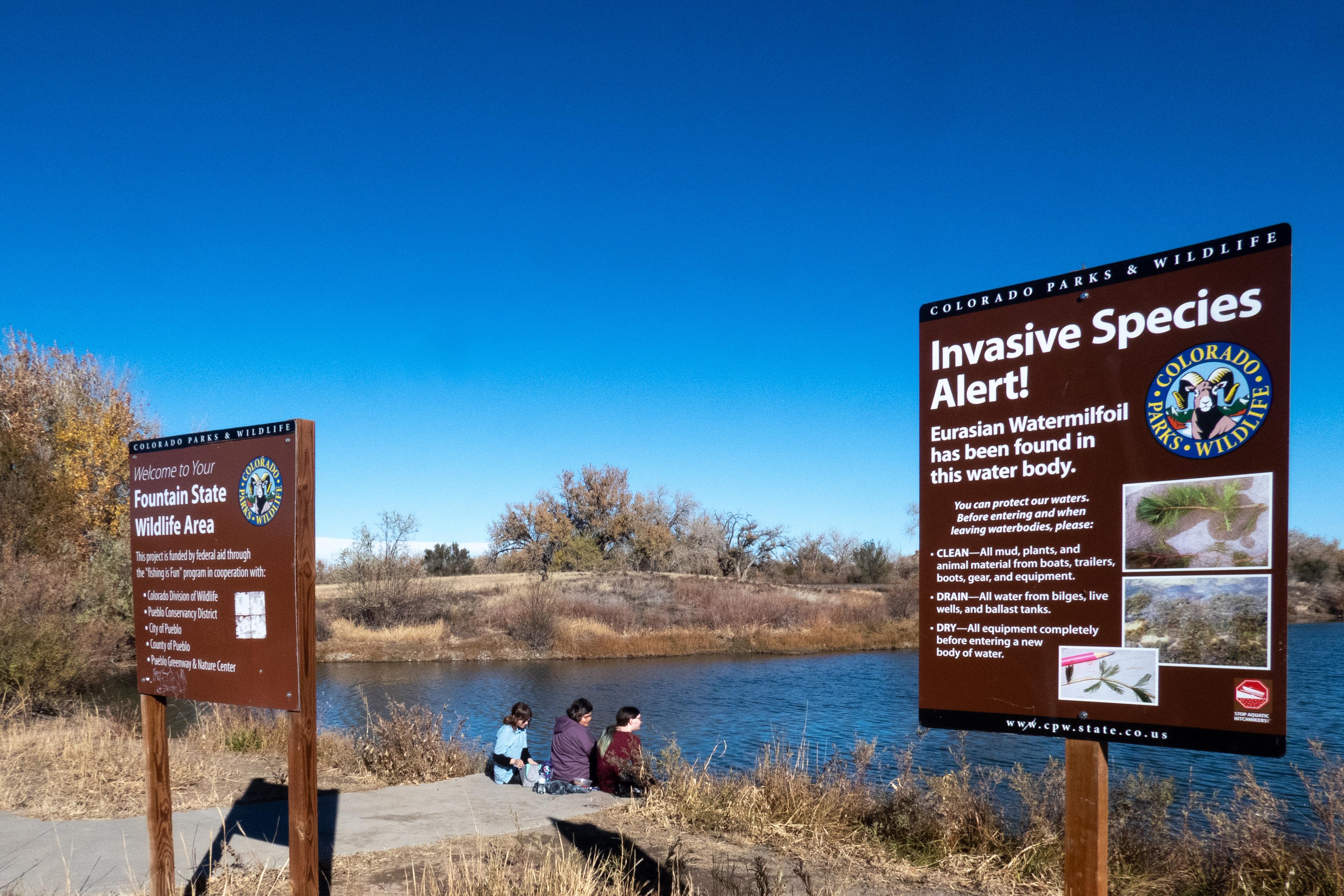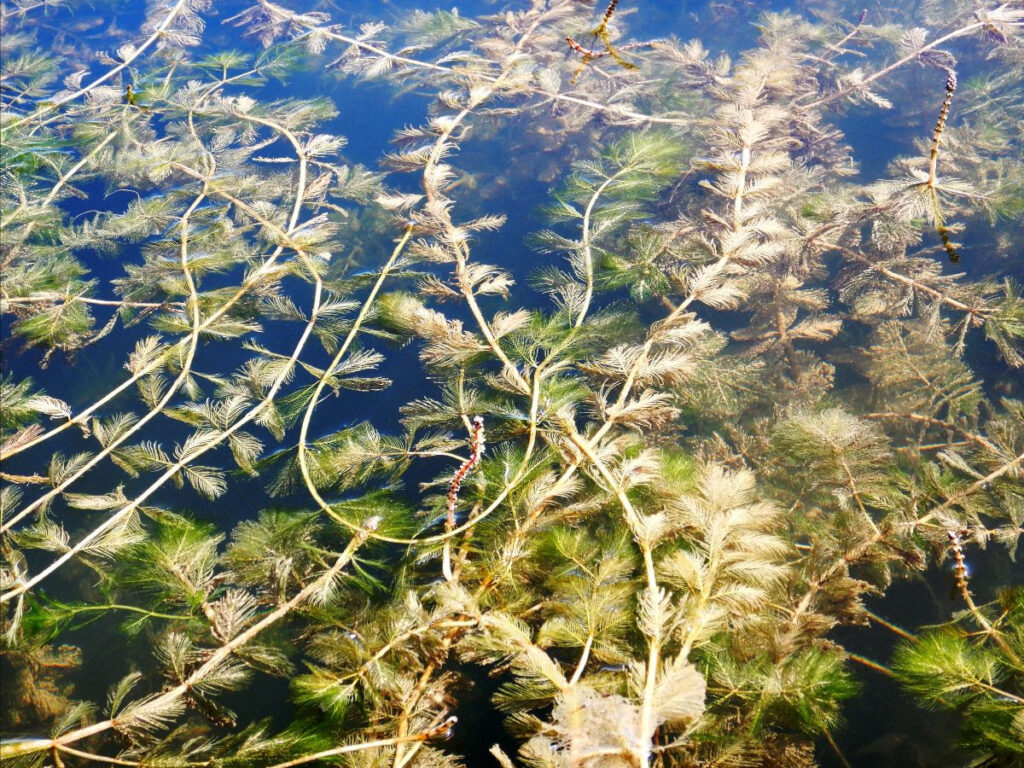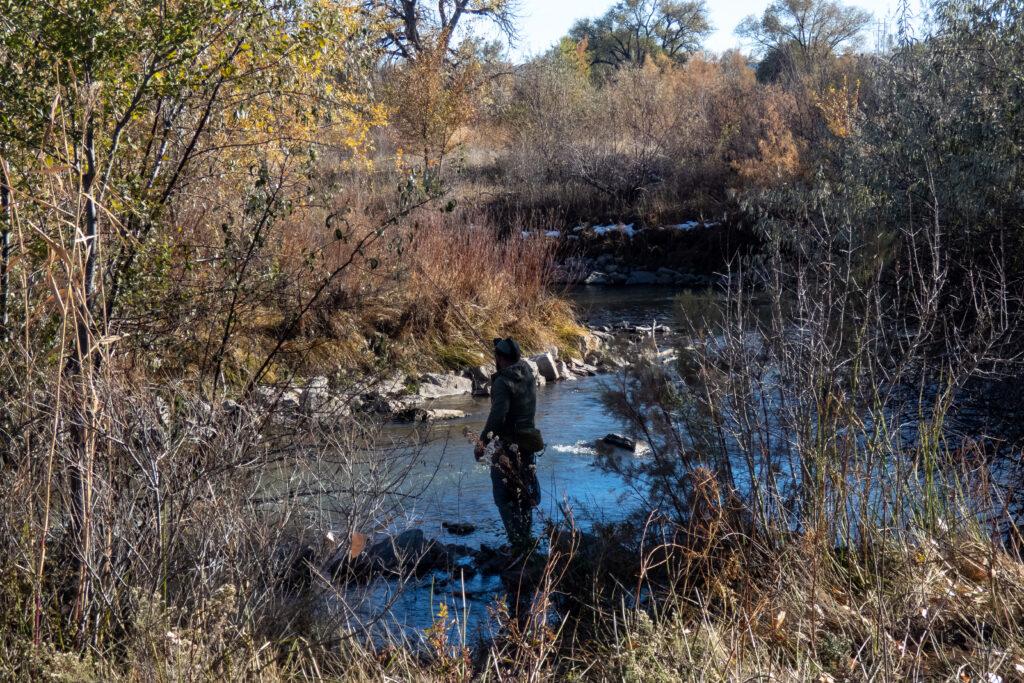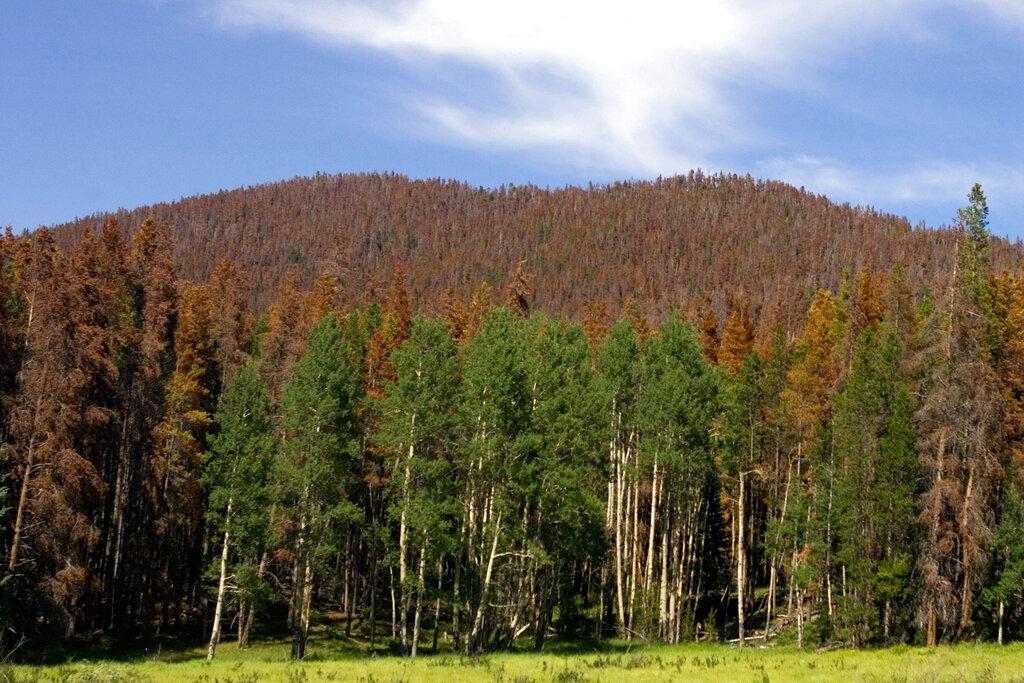
Scientists are warning Puebloans about a fast growing invasive plant recently found in a lake that connects to the Arkansas River.
It may look delicate, but Eurasian watermilfoil can grow quickly and threaten native fish and plants. It forms dense mats that can clog water systems, damage boats and make swimming difficult. Those mats also block the sunlight underwater which can degrade the ecosystem, harm fish spawning areas and increase mosquito breeding habitat.
The noxious species was recently spotted in the Runyon/ Fountain Lake State Wildlife Area in southeast Pueblo. Colorado Parks and Wildlife Invasive Species Program Manager Robert Walters announced the discovery on Thursday.

“Eurasian watermilfoil can quickly damage an ecosystem,” Walters said. “It is very prolific and can grow up to a foot per week during the growing season.”
Although the plant roots at the bottom of the body of water, it survives as a free floating plant, where small bits of it can break off and easily take root elsewhere. It also grows from seeds.
Colorado Parks and Wildlife is urging people to inspect, clean and dry boats and other water equipment to help prevent further spread of the plant.
Walters is also asking the public to report to CPW when they see invasive species including zebra and quagga mussels and Asian carp.

The agency is working on a plan to control the invasive plant in Pueblo including signage to inform the public.
Eurasian watermilfoil was found in Boulder Reservoir in 2022 and now has become established, affecting boating and swimming. It's also potentially affecting a water treatment plant and other water facilities according to the City of Boulder website.
CPW has also recorded the plant in Cheyenne County and other areas.
- New pedestrian bridge will open more recreational opportunities on Arkansas River in Pueblo
- You're now free to snap up all the imported red swamp crawfish you can eat in Colorado
- Plans are moving forward to transform a dangerous stretch of the Arkansas River in Pueblo into a recreation area
- How water in Southern Colorado’s rivers gets divvied up before crossing state lines









